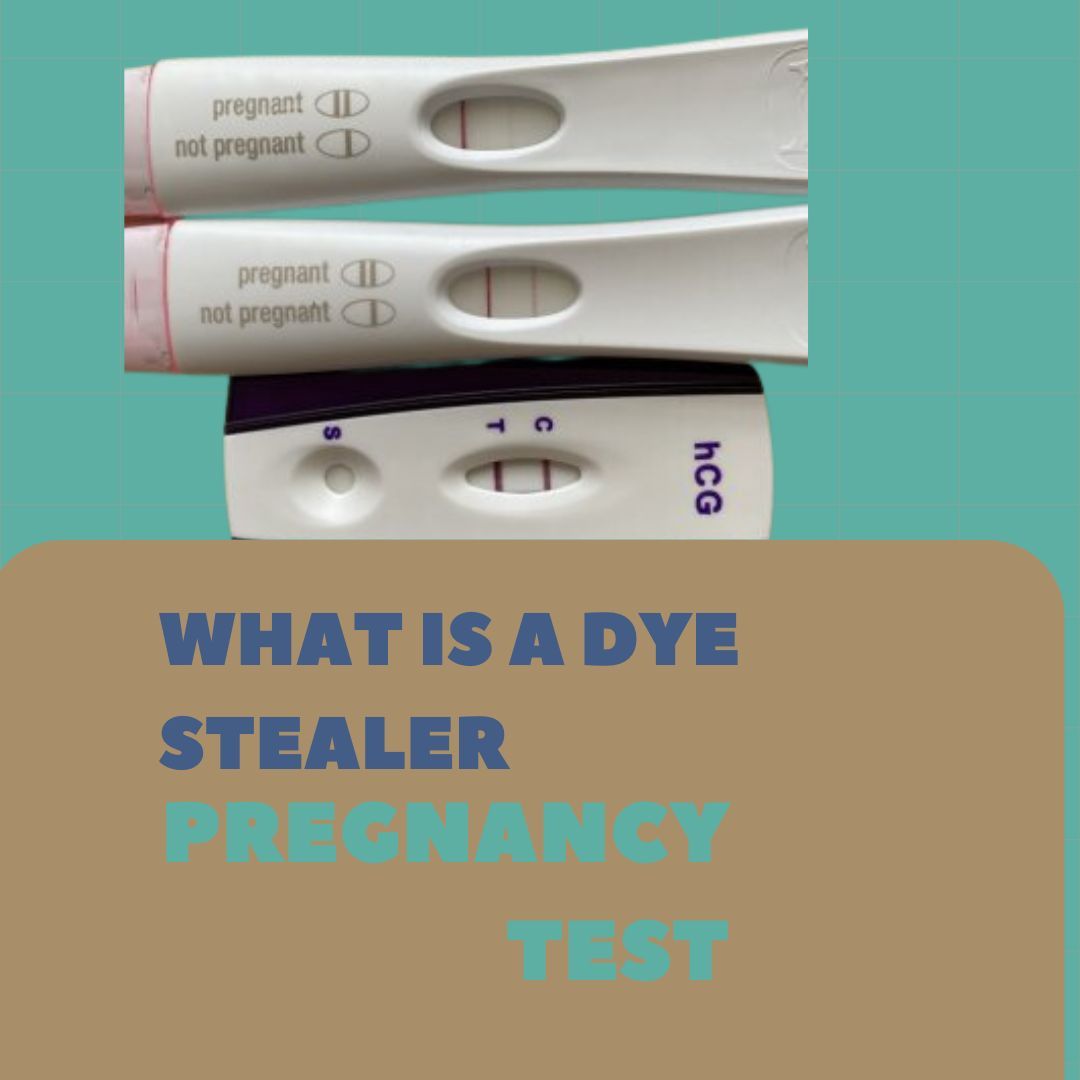However, sometimes the test line appears darker, which may concern many mothers. Such pregnancy tests are called dye stealer pregnancy tests. If your pregnancy test is also a dye stealer pregnancy test, and you are curious about what it means or what is dye stealer pregnancy test then let's take a look at it.
What Is A Dye Stealer Pregnancy Test?

Pregnancy tests are designed to detect the human gonadotropic hormone, which is only secreted in pregnant mothers through their placentas. The higher the amount of gonadotrophic, the darker the test line will appear.
Pregnancy tests give results according to the amount of human gonadotrophic hormone, also known as HCG. A darker test line means that the level of HCG in bodies is high, and it is completely normal. So if you get a dye stealer test, there is no need to worry.
Reasons Behind A Dye Stealer Pregnancy Test
A dye stealer pregnancy test means your human gonadotropic hormone level is high. Following are the cases where the human gonadotropic hormone can be high, so let's look at those cases.
Your First Trimester Is Over.
It is one of the most common reasons for the test line appearing darker than the control line. Human gonadotropic hormones are low during the early weeks of pregnancy and reach their maximum at the end of the first trimester. If you are taking a test late, then it is possible to have a dye stealer test.
You Are Pregnant With Multiple
If you're doing a pregnancy test earlier and it is still a dye stealer pregnancy test, then you may be pregnant with multiples. HCG level is directly proportional to the number of babies, so if the baby is more than one, the HGC level will be higher even in early pregnancy.
Progression Of HCG In Pregnancy
You can detect your pregnancy as early as five days after the missed period; however, early testing results in a faint line. Human gonadotropic hormone levels increase after every 72 hours, and it is the highest between 8 to 11 weeks. After that, the HCG level starts to decline. A dark test line can appear in the fifth week of the pregnancy, and at this moment, if you are doing your test, then it will be a dye stealer test.
Can HCG Fluctuate During Pregnancy?
HCG can normally fluctuate during pregnancy and is higher during the first trimester. However, if the level of HCG drops during the first trimester, it is alarming.
If your HCG level suddenly drops, it may indicate an ectopic pregnancy or abortion. In such cases, your doctor will perform a vaginal ultrasound or retake the HCG test to confirm the results.
Is Dye Stealer A Good Sign?
A dye stealer is a good sign if you continuously try for a baby. It also confirms your pregnancy and indicates that you may be pregnant with more than one baby or your first trimester is ending. In case of a dye stealer pregnancy, immediately visit your gynecologist so that they will monitor you closely and will make sure that you will have a healthy pregnancy.
Some Other Pregnancy Test Anomalies
By performing a single pregnancy test, your whole life can change. You may feel depressed, or you may start crying with happiness. In most cases, if used correctly, pregnancy tests give 99.9% accurate results; however, there are some cases where the results may vary.
Faint Test Line

Like a darker test line, you may observe a very faint line that is hard to observe. If your test line is faint, it's just the beginning of pregnancy, or it may be a false positive result.
A False Negative Test At Night
Looking closely at the HCG levels in pregnancy, we will know that HCG levels are higher during the morning and will decrease by the end of the day. Taking a pregnancy test in the morning with the midstream urine is also advised. If you are not taking a pregnancy test in the morning, the results may appear false negative. So take a pregnancy test in the morning and do not dilute it with water.
Hooks Effect
It is rare and occurs only in 0.2% to 2% of pregnant women. In this case, your first test will be positive; however, the second or third test may appear negative. This effect appears after five weeks of pregnancy. The test appears negative because women have high levels of HCG in their urine.
Such high levels of HCG are hard to deduct from the test because of oversaturation. So if your first test is positive but your second or third test is negative, then it is best to go to a gynecologist so they can tell you better about your pregnancy.
Tips For HCG Test
If you want to get the appropriate results on the first try, then here are some of the tips which you must follow before taking a pregnancy test
- Do not perform the test at night because the HCG level is lower; try to do it early in the morning.
- Do not dilute your urine with water.
- Take urine from midstream.
- Wait for the time written in the instruction manual and then check the results.
- Make sure that the test is not expired.
- Some medications, such as fertility drugs and diuretics, can alter the results of pregnancy tests. For this purpose, you must visit your gynecologist if you miss your period.
FAQs
Does the dark line indicate a healthy pregnancy?
No, a dark test line is not a sign of a healthy pregnancy. A dark test line only means you are pregnant with twins or doing the test too late.
What do c and t stand for in a pregnancy test?
Most pregnancy tests are marked with two alphabets C and t. C indicates the control line, while t indicates the test line. If a line appears in the t-zone, you are pregnant; however, if there's only one line in the c-zone, it means you're not pregnant.
Conclusion
Dye Stealer pregnancy tests are common nowadays, and many mothers are confused about whether it is a positive test or an anomaly. If a pregnancy test is a dye stealer, it is positive; however, It indicates two things: you are pregnant with twins or doing the test very late.
If you get a dye stealer pregnancy test, don't get worried too; try to visit your gynecologist as soon as possible.









